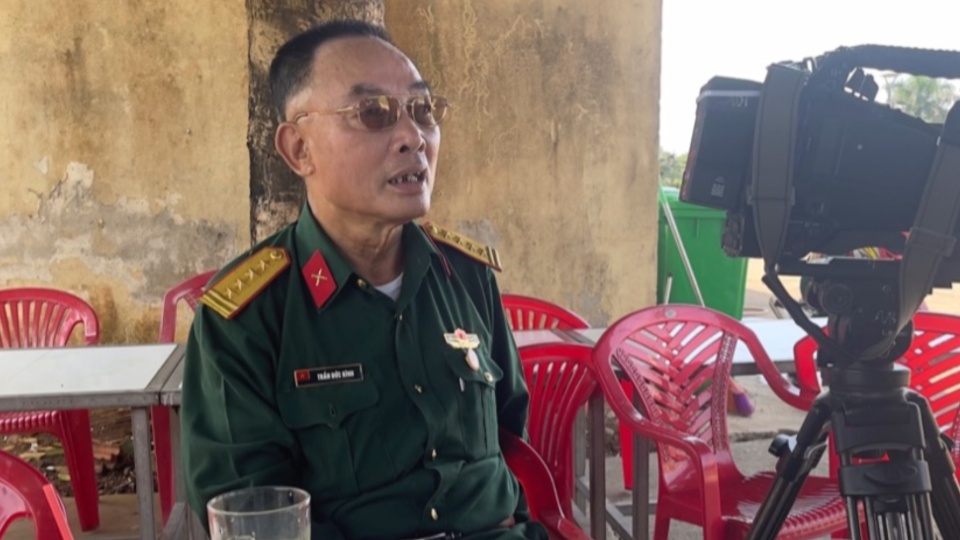
KHE SANH, Vietnam—On July 9, Vietnam will mark 55 years since the country’s victory at the Battle of Khe Sanh. The 1968 fight in this town in central Vietnam was a ferocious battle between the Vietnamese People’s Army (North Vietnam) and the National Liberation Front (often called the Viet Cong in the U.S.) on one side and the U.S. military and the forces of the Army of the Republic of Vietnam—the military of the U.S. client state in Saigon—on the other.
From the end of January 1968 until the beginning of July, Khe Sanh became the most densely bombed place on the planet, as the U.S. military used every means at its disposal to try and protect its fortresses there, part of the failed “McNamara Line” of defense. The fighting was so intense that Gen. William Westmorland wanted to employ nuclear and chemical weapons. Thankfully, the administration of President Lyndon B. Johnson decided against their use because the mountainous terrain would limit their effectiveness (the fact that the use of these weapons are illegal war crimes and crimes against humanity didn’t play a factor in the decision making).

I recently had the opportunity to travel to Khe Sanh and the surrounding areas of Quang Tri province with a veteran of the battle, Senior Col. Tran Duc Binh. Every year, Col. Binh returns to Khe Sanh to visit the graves of his fallen comrades. He shared many stories of the fighting, but the tale he was most proud of was the time his unit found a lost U.S. soldier, wounded and wandering in the jungle. They helped get him back on his feet and gave him milk, which was a great luxury at the time. Once the U.S. soldier was feeling better, they helped him get back to his base.
Col. Binh explained that Vietnamese troops are proud soldiers, but they were never bloodthirsty. All they ever wanted was peace, independence, and for Vietnam to be allowed to follow its own political and economic path without foreign interference. Today, he is proud that Vietnam is a peaceful nation, and that the Vietnamese People’s Army spends most of its time helping build roads, farming, participating in disaster relief, and coordinating medical and logistical help for people in need overseas, such as in African countries.
Today, Khe Sanh and Quang Tri have been given a new lease on life. After being bombed so intensely and poisoned with Agent Orange, the area is finally cleaned up and beginning to develop.
One of the first places we visited was a coffee farm whose produce has won awards and is now being exported to Europe. The owners and farmers are extremely proud of their coffee and explained how the unique mountainous terrain around Khe Sanh helps give their coffee its special characteristics. It is their hope that when people hear the name Khe Sanh they won’t only think of its difficult history but will also think of all the wonderful people and nature in the region.

A similar message was echoed by Mr. Le Quang Nhat, deputy director of Sepon Group. Sepon Group has helped develop the local agricultural industry, focusing on products like rice, black pepper, tea, and, of course, coffee. Nhat took us to his rice fields and explained that it wasn’t too long ago that the area was still poisoned by Agent Orange and other remnants of the war, leaving the land barren. But thanks to the combined effort of the Vietnamese government, the local Vietnamese people, NGOs, and some private businesses, they are able to grow top-quality products. Nhat said they are even hoping to start exporting Quang Tri rice to the U.S. one day soon.
Smiling, Col. Binh said, “The color green has returned to Quang Tri.”

We were also fortunate to visit Khe Sanh’s wind farm, one of the largest in Vietnam. It boasts the heaviest and tallest wind turbines in the country and is a significant part of Vietnam’s green energy future. Built on the site of some of the fiercest fighting of the Battle of Khe Sanh, the wind farm is a metaphor for Col. Binh’s message that while the past must be remembered and respected, it is also important to work for a better future.
Quang Tri is still a poor province, but it has a promising and bright future. It is a great example of how Vietnam’s path to building socialism helps better the lives of average people, even in the poorest regions of the country. While there still remains a lot of work to be done, the optimism in the voices of the people in Quang Tri speaks for itself.
I asked Col. Binh what he thought Quang Tri will look like in another 10 or 15 years. He said that he can’t even begin to imagine, but he is sure that things will continue to develop positively and repeated his earlier message, “The green came back to Quang Tri,” so anything is possible.
We hope you appreciated this article. At People’s World, we believe news and information should be free and accessible to all, but we need your help. Our journalism is free of corporate influence and paywalls because we are totally reader-supported. Only you, our readers and supporters, make this possible. If you enjoy reading People’s World and the stories we bring you, please support our work by donating or becoming a monthly sustainer today. Thank you!










